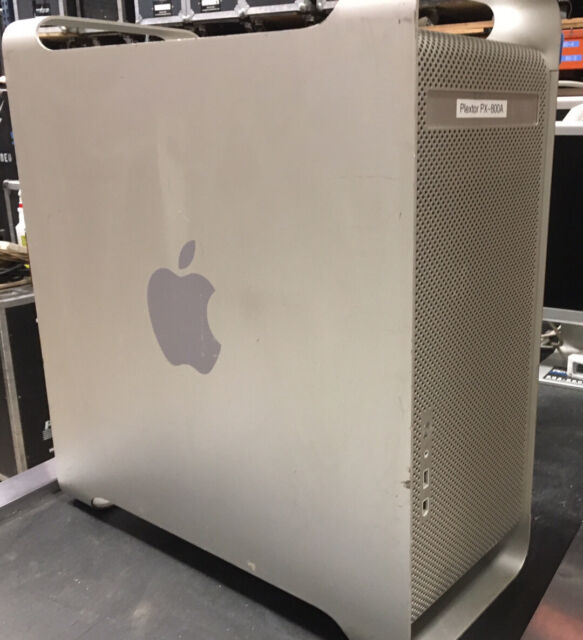

- APPLE MAC G5 DESKTOP TOWER COMPUTER UPGRADE
- APPLE MAC G5 DESKTOP TOWER COMPUTER PORTABLE
- APPLE MAC G5 DESKTOP TOWER COMPUTER ANDROID
- APPLE MAC G5 DESKTOP TOWER COMPUTER PC
With the exception of our budget contenders and the Mac mini, all the mini PCs in our test group have a 10th- or 11th-generation Intel Core i5 processor or a 4000-series AMD Ryzen processor.
APPLE MAC G5 DESKTOP TOWER COMPUTER PC
Processor: A mini PC needs a processor powerful enough to handle basic web browsing, light photo editing, and any office programs you use.
APPLE MAC G5 DESKTOP TOWER COMPUTER ANDROID
Popular suites and programs such as Office 365 and Adobe Lightroom do have web-based or Android versions, but if you need specialized software for work or school, you’re better off with Windows or macOS. Although Chromeboxes can run Android apps and offer “experimental” support for some Linux apps, that software can’t close the app gap between Windows/macOS and Chrome OS. Chrome has notably limited options for photo, video, and audio editing software, as well as for text editors used in programming. If you spend your computing time in a browser-checking email, using Google’s productivity suite, watching Netflix, reading social media- Chrome OS is all you need. At the lowest budgets, we preferred Chromeboxes, which run Chrome OS, an operating system that uses the Chrome web browser as its primary interface. Mini PCs are available for less than $250, but Windows PCs in that price range have unusably slow processors and less memory and storage than most people need.
APPLE MAC G5 DESKTOP TOWER COMPUTER PORTABLE
The Mac mini is also quite a bit larger than most of the Windows mini PCs we tested, and Apple’s internal storage upgrades are pricey enough that you should look at an external hard drive or a portable SSD if you need more space.

But the new Mac mini has fewer ports than the Intel-based model it replaces, and none of those ports are accessible from the front.
APPLE MAC G5 DESKTOP TOWER COMPUTER UPGRADE
For everyday browsing and general use, an M1 Mac mini with 8 GB of memory is good enough, though if you plan to use yours for professional photo and video editing or app development, you should step up to 16 GB of memory you can’t upgrade the Mac mini’s memory and storage after you buy it, so you need to make that decision up-front. The Mac mini is one of Apple’s first computers to stop using Intel chips, and the result is a surprisingly fast and energy-efficient mini desktop with enough processor power to edit video and compile code, as well as sufficient graphics performance to keep a pair of 4K monitors feeling fast and fluid (we can emphatically say this was not true of Mac minis with Intel’s integrated graphics).

If you prefer macOS, get the Mac mini with Apple’s M1 processor.

We like the Asus PN50 bare-bones mini PC because its AMD Ryzen processors offer good enough performance for everything from web browsing to light gaming, and because the PN50 squeezes in all of the ports most people will need (including a microSD card slot on the front). But if you’re comfortable installing these things yourself, it’s often more economical to buy a bare-bones system, especially if you need a large SSD, for storing big video files or games, or 16 GB of memory, for editing high-resolution photos and videos. A somewhat cheaper version with 4 GB of memory is available (and you can upgrade the memory later, if you want), but we think most people are likely to be happier with the extra speed and responsiveness that 8 GB of memory offers.Ī “bare-bones” mini PC comes without memory, storage, or an operating system, so it’s not ready to use out of the box. The CTL Chromebox CBX2 includes twice as much memory as other similarly priced budget Chromeboxes we considered, and it has plenty of ports. In fact, the app you use for almost everything on a Chrome OS device is the Chrome web browser, and your device has to be connected to the internet for most tasks. But unlike a Windows or Mac computer, a Chrome OS device (mostly) can’t use desktop apps. Thanks to Google’s Chrome OS, the CTL Chromebox CBX2 is faster than a similarly priced, $300 Windows PC at browsing the web, handling basic word processing, and playing movies. And for easy upgrades later on, you need to remove only one screw to access its M.2 storage and two memory slots. Its fan is nearly silent in everyday use and tolerable under more intensive workloads. On the back, it has one DisplayPort and one HDMI port so you can easily use multiple monitors (if you order a custom configuration, you can add more USB-C, DisplayPort, or HDMI ports). The front panel has one USB Type-C port for newer accessories as well as a Type-A port for older cables and USB drives. Lenovo sells several ThinkCentre mini PCs with the same basic design, including the M80q Tiny and M90q Tiny, but the M70q Tiny offers the best combination of price and features.


 0 kommentar(er)
0 kommentar(er)
